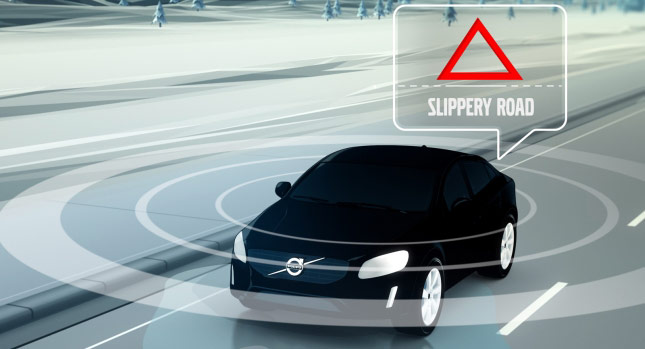Volvo has joined forces with the Swedish Transport Administration and the Norwegian Public Road Administration to commence a pilot program that will have them record then store “road friction information from individual cars is shared within a cloud-based system.”
In other words, the grip level will be measured, and if there are any particularly slippery or hazardous sites, these will be marked accordingly and passed around for all (those who are connected) to see.
Currently operating 50 test cars, a number that’s expected to “grow considerably,” their collective goal is to get the technology up and running in the service of road users “within a few years.”
The simple working principle relies on there being a cloud-based database where if one car detects, for instance, a patch of ice, that information will be directed towards all who subsequently pass through the same area, or in its vicinity. It would also be sent to road administrators, which would, through their subcontracted firms, act to address such issues; this would dramatically reduce their response time.
Erik Israelsson is the Project Leader Cooperative ITS (Intelligent Transport System) at Volvo Cars and he explains it more plainly: “When the road administrator has access to information from a large number of cars, the data can be used to make winter road maintenance more efficient. The information could help to improve road safety further for all road users. This could also reduce the use of salt when not needed and minimise the environmental impact.”
By Andrei Nedelea
PHOTO GALLERY





